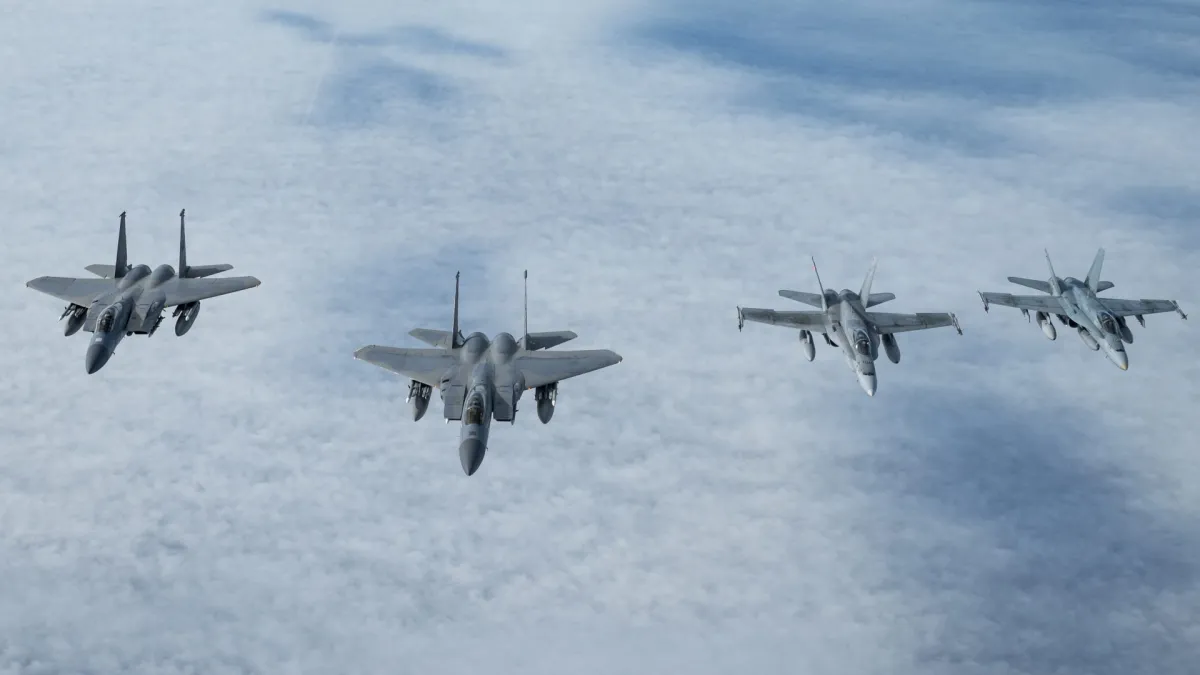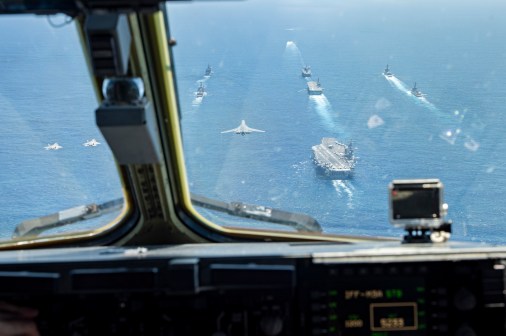Air Force primed to deliver initial cloud-based C2 capability to Northcom, NORAD

NATIONAL HARBOR, Md — The Air Force is on the cusp of delivering the initial cloud-based command and control (CBC2) capability to U.S. Northern Command and the North American Aerospace Defense Command. And the office leading the effort is already mulling over how best to scale the capability to other organizations — that is, if there aren’t any budget-related obstacles.
CBC2 is slated to reach initial operating capability before the end of fiscal 2023, and over the next two to three quarters of fiscal 2024 the Air Force will deliver the capability to Northcom and NORAD at three different locations, Brig. Gen. Luke Cropsey, program executive officer for command, control, communications and battle management (C3BM), said Sept. 11 at AFA’s Air, Space and Cyber conference.
Although he couldn’t name the exact locations where CBC2 would be delivered, Cropsey told reporters during a media roundtable at the event that the initial capability would remain focused on the air defense mission for the time being.
“I think part of the reason that the CBC2 team has been as successful as it has been over the last 15 months is because we actually did agile [development] as opposed to just talking about it — and we’re pretty good at just talking about things in this context,” he said.
A ‘global view’ of air defense
The new cloud-based capability is intended to replace a legacy command-and-control system while also merging critical data feeds from three other separate systems. More than 750 radar feeds will be available under a single user interface, allowing operators to “create machine-generated courses of action to help shorten the tactical C2 kill chain and send a desired effect via machine-to-machine connections,” according to the Air Force.
The capability’s delivery is a key milestone for the service’s Advanced Battle Management System efforts, which serve as one of the Air Force’s contributions to the Pentagon-wide initiative known as Joint All-Domain Command and Control (JADC2). The new warfighting concept seeks to connect the sensors and shooters from across the U.S. military and international partners under a single network, enabling faster and more effective decision-making and employment of forces.
Although the Air Force has contracted multiple companies to provide microservices — ranging from mapping to data analytics — for CBC2, it awarded Science Applications International Corp. (SAIC) a $112 million contract to serve as the prime integrator and operator for the capability.
“It used to be that you had five separate sectors that all had their own radars and their own views, and then they were connected by networks,” Joe Sublousky, vice president of SAIC’s JADC2 businesses, told DefenseScoop in an interview on the sidelines of the conference. “Now, they’re all connected in a cloud-based command and control, which means for the first time you have a global view of air defense sector inputs.”
When asked by DefenseScoop what made CBC2’s rapid development a success, Cropsey pointed to the organizational structure of the team working on its delivery.
He explained that both Northcom and his office each designated an operational person for each microservice offered by CBC2, generating the iterative user-and-development cycle that agile processes call for.
“That may be the single biggest reason why CBC2 is moving as well as it’s moving, because of that teaming arrangement,” Cropsey said.
Cropsey also highlighted the Air Force’s contract approach to CBC2, which “thin-sliced” the capability into multiple microservices that allowed the program executive office to contract for each individual layer — as opposed to awarding one giant contract for the entire capability. It’s a contracting method Cropsey has previously said will be critical in getting JADC2-related technologies across the finish line.
In order to bring all of those microservices together, SAIC focused immediately on laying down a foundational digital architecture that allowed the 15 different capability providers to integrate all of their data in a common language format, Sublousky said. That allows the varying microservices to come together and provide a more comprehensive picture of what’s happening in the air defense sectors using “dots on a screen,” but also provide recommended courses of action, he noted.
“One capability provider might be getting the radar feeds and putting it up, but the other one is ingesting those dots or those lat logs and then doing some analytics on it to say whether it is off course or not off course,” Sublousky said. “While another capability provider can say, ‘Okay, here’s all the aircraft that are in the region, and here’s the ones that are close enough to get to it in time to make a decision.’”
Next steps
As the Air Force delivers CBC2 over the next couple of months, Cropsey told DefenseScoop that whether or not they’re able to scale the capability to other locations or combatant commands remains an open question for now. Some locations they’re considering include U.S. Indo-Pacific Command, U.S. European Command and other places, he noted.
Those scaling efforts will depend on how well the service can replicate the teaming structure focused on the current CBC2 capability, Cropsey said.
“I think that in order to make CBC2 to scale in terms of the results that we got, it’s not about growing the team. It’s about actually replicating the team in other instances,” he said. “I need to keep the existing CBC2 team very focused around the specific problems and operational outcomes NORAD/Northcom uses. They can’t get diluted in that focus.”
There are other factors to consider when scaling a deployable capability, as well. Not only do future locations need the proper digital infrastructure so that CBC2 can connect back to the enterprise, the Air Force would also need additional hardware components for processing and compute, he noted.
But Cropsey said the actual number of locations the Air Force could deploy CBC2 at would be impacted if Congress fails to pass its annual defense spending bill, forcing the Pentagon and other federal agencies to operate under a continuing resolution.
His office plans to prioritize delivering CBC2 to the initial three locations at Northcom and NORAD, even in the event funding for fiscal 2024 is stalled. Still, his office wouldn’t be able to expand the infrastructure to additional locations as quickly as he would want without additional funding.
“What it will mean is we’ll have to delay how we roll in the additional scale and scope — particularly on the digital infrastructure end of it, because those were where the primary cost drivers come in as a function of time and deployment,” Cropsey said. “We’ll keep the coding going. We’ll keep that development basically at speed, and it’ll turn more into a conversation about how fast and how many.”






